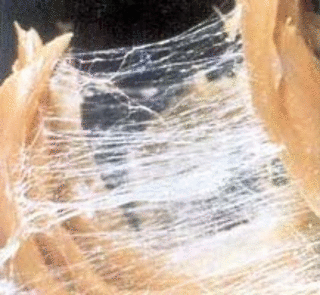
Deep TissueThe Deep Tissue
Deep Tissue, as the name suggests, refers to the tissue located between the skin and the underlying structure of muscle and bone, and forms a seamless web that covers and connects the muscles, organs, and skeletal structures in our body. This is called the fascia, and it is responsible for maintaining our body's structural integrity, supporting our posture, and acting as a shock absorber.
Myofascial refers collectively to the tissue and the myscle. Together, the muscle and fascia form the myofascial system. The myofascial system is a totally unified structure that is present throughout your posture without any interruption.
Deep Tissue Massage
Deep Tissue Massage is most useful when someone wants the bodywork to be done to the fascial level. Rolfing incorporates Deep Tissue Massage through Myofascial Release, a Rolfing therapy targeted at the fascial system and posture.
“Myo” refers to the muscle, and “fascial” refers to the smooth tough tissue that covers all the muscles. Myofascial release is a form of deep tissue work or deep tissue massage is intended for pain relief, increasing range of motion and balancing the body.
How Rolfing’s Deep Tissue Massage Helps
Injuries, stress, inflammation, trauma, and poor posture can cause restriction to fascia. The goal of deep tissue massage is to release fascial restriction and restore the natural balance of the tissue tissue through the hands of the Rolfer. Myofascial Release or Deep Tissue Massage is an integral part of Rolfing.
Deep tissue massage (through Rolfing) helps people with poor posture , physical injury, illness and emotional stress. It is also used to treat back pain, fibromyalgia, headaches, chronic fatigue syndrome, menstrual problems, incontinence, tennis elbow, sprains, rheumatoid arthritis, muscle spasms, whiplash injuries and carpal tunnel syndrome. It is also very helpful for athletics and those who have sports injuries. Deep Tissue massage may also be used to treat children suffering from birth trauma, head injuries, cerebral palsy, and scoliosis.
What Differentiates Rolfing’s Deep Tissue Massage?
What distinguishes Rolfing from other deep tissue massage is not the medium in which we work, but the goal of our work - which is organizing the body in gravity . Releasing the tight deep tissue can be common in other massages or practices, but bringing your body in alignment is the goal of Rolfing, which in terms will help your posture and remove the tension in your body.
The fascial layer or connective tissue A lady who got better alignment from the deep tissue massage of Rolfing
Deep Tissue
|

Certified Rolfer®
Vincent Lee
Rolfing was featured in


“Two Hands” 2007 Academy Award. Nominated for documentary film.

Andrew Weil, M.D.
“Good Morning From Dr. Weil.com” An on-line daily newsletter published a health news brief June 25, 2004--“Tip: Is Your Posture Bad? Today’s Tip-Rolfing."

